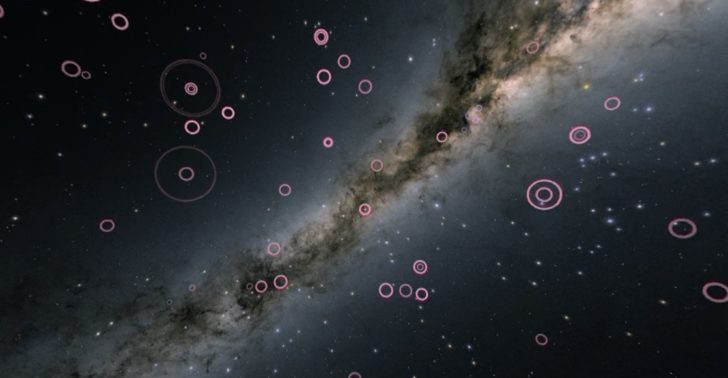NASA shared this interactive video that uses 360-degree animation and data sonification to track humanity’s discovery of the planets beyond our solar system over time.
The video demonstrates how, over the last 30 years, we’ve identified over 5,000 planets outside our solar system, and how the rate of discovering planets is accelerating.
Here’s what NASA has to say about the video:
“Turning NASA data into sounds allows users to hear the pace of discovery with additional information conveyed by the notes themselves.
As each exoplanet is discovered, a circle appears at its position in the sky. The size of the circle indicates the relative size of the planet’s orbit and the color indicates which planet detection method was used to discover it. The music is created by playing a note for each newly discovered world. The pitch of the note indicates the relative orbital period of the planet. Planets that take a longer time to orbit their stars are heard as lower notes, while planets that orbit more quickly are heard as higher notes.
Exoplanet detection methods: radial velocity (pink); transit (purple); imaging (orange); microlensing (green); timing variations (red); orbital brightness modulation (yellow); astrometry (gray); disk kinematics (blue).
Please note: Not all browsers support viewing 360 videos. YouTube supports their playback on computers using Chrome, Firefox, MS Edge, and Opera browsers. For the best experience on a mobile device, play this video in the YouTube app.”


Well i don’t know about the video but the music sounds like a 20 dollar music library piece….
Loved the big chord at the end. Would like to hear the note pitches be based on position in the sky or multiples of the orbit speed or something.